|
|
HMS Firedrake
Mod Summary of Service 1935 - 1942 Continued |
|
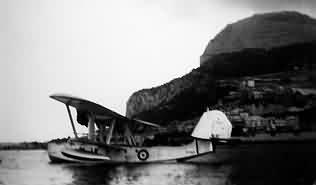 |
Between
8-15th October 1940 the Firedrake, together with HMS Hotspur, owing
to their high endurance, were allocated as extra escorts for convoy
HG 45 Gib to UK. On the 18th October, with the assistance of HMS Wrestler and two Saunders-Roe London Flying boats of 202 Squadron RAF, the Firedrake sank the Italian submarine Durbo (Tenete DI Vasc. Armando Acanfora) east of Gibraltar in position 35° 57’ N 004° 00’ W. The submarine surfaced and was abandoned at 19.50hr sinking soon afterwards. The entire crew of 46 officers and men were rescued by the Firedrake and taken prisoner. |
| The Firedrake and Wrestler were also involved, albeit indirectly, in the sinking of another Italian submarine two days later. When the Lafole (Tenete DI Vasc. Riccomini) was sunk by HM ships Gallant, Griffin and Hotspur south east of Alboran Island on the 20th October, it was acknowledged that the successful location and destruction of this boat was due almost entirely to a number of personnel from the Firedrake and wrestler who boarded the Durbo on the point of sinking and managed to obtain confidential documents showing Italian U-boat positions. |
| At the
end of October the Firedrake, with Force H left Gibraltar to shadow
the French destroyer Brestois, Bordelais, L’Alycon, Simoun and Tempete,
which were proceeding to Casablanca. On the 25th November 1940 Force H left Gibraltar to participate in operation ‘Collar’ - the passage of a convoy to Malta, and further naval reinforcements for the Eastern Mediterranean. |
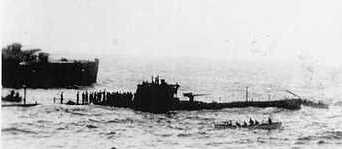 |
| On the 27th November contact was made with a powerful Italian force, including the battleships Vittorio Veneto and Guilio Cesare, seven heavy cruisers and 16 destroyers, and an action developed into the inconclusive Battle of Cape Spartivento. Force H returned to Gibraltar on the 29th November. On Christmas Day 1940 force H was ordered to sea in support of the middle East troop convoy WS 5A after an abortive attack on the convoy by the German heavy cruiser Admiral Hipper. The German ship was engaged and driven off by the convoys cruiser escort, HMS Berwick, and Force H remaining in the vicinity until the 27th December, then sailed for Gibraltar. |
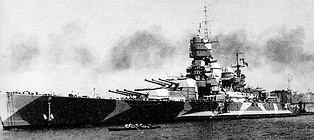 |
On
the 1st January 1941 together with HM ships Duncan, Foxhound, Hero
and Jaguar, HMS Firedrake took part in operation ‘Ration’ - the interception
of a convoy of four Vichy French merchant ships, escorted by an armed
trawler, clear of Spanish territorial waters off Cape Tres Forcas.
Ships of the convoy were later escorted to Gibraltar; the trawler
was allowed to proceed. Later in the month the Firedrake was involved in an operation connected with the passage of a convoy to Malta, operation ‘excess’. and Convoy HG 51. |
| At the end of the month she accompanied Force H for operation ‘Result’ - the bombardment of the Italian port of Genoa. During February 1941 the Firedrake escorted convoy HG 53 and carried out patrol duties off Gibraltar. On the 1st March she went aground in thick fog near Gibraltar in position 36° 28’ N, 04° 45’ W, damaging her propellers and losing her Asdic dome. |
|
She was re-floated and returned to Gibraltar under her own power at
a speed of 11 knots, arriving at 18.50. Between the 5th March and 21st April the Firedrake was under repair at Gibraltar; she then proceeded to Chatham for further repairs and refit, completing on the 19th June 1941. After a further defect rectification period at Devonport at the beginning of July she escorted the 9th Motor Launch Flotilla to Gibraltar and rejoined the 8th DF and Force H. |
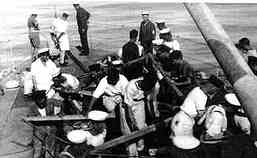 |
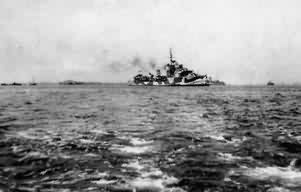 |
Later
in July the Firedrake took part in operation ‘Substance’ - the passage
of a convoy GM 1 to Malta. At 19.45 on the 23rd July the convoy was bombed from high level in position 37° 30’ N, 10° 40’ E. the Firedrake, in the process of towing a two speed destroyer sweep (TSDS) was narrowly missed by a 500 kilo bomb which exploded on the starboard side, close alongside No.1 boiler room, causing severe structural damage; the side plating which was blown inwards from upper deck to bilge keel over most of the length of No.1 boiler room, and over the fore end of No.2 boiler room; both boiler rooms were flooded and Nos.1 and 2 boilers actually shifted position as a result of the blast. |
| Later
in July the Firedrake took part in operation ‘Substance’ - the passage
of a convoy GM 1 to Malta. At 19.45 on the 23rd July the convoy was bombed from high level in position 37° 30’ N, 10° 40’ E. the Firedrake, in the process of towing a two speed destroyer sweep (TSDS) was narrowly missed by a 500kg bomb which exploded on the starboard side, close alongside No.1 boiler room, causing severe structural damage; the side plating which was blown inwards from upper deck to bilge keel over most of the length of No.1 boiler room, and over the fore end of No.2 boiler room; both boiler rooms were flooded and Nos.1 and 2 boilers actually shifted position as a result of the blast. |
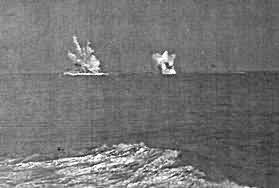 |
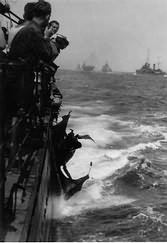 |
Picture
above and right, shows the Firedrake covered by the spray made by
the 500kilo bomb that just missed but severely damaged the ship. When
she arrived back in Gibraltar there was a band waiting for her,
the band played Rule Britannia as she entered the dock. |
| On the 13th September, together with the HMS Manchester (also damaged on operation ‘substance’) the Firedrake left Gibraltar for Boston, Massachusetts the Manchester bound for Philadelphia. |
| Between
23rd September 1941 and January 1942 the Firedrake was in hand at
Boston; as well as permanent bomb damage repairs, the (Y) 4.7 inch
gun and TSDS were removed and replaced by additional depth charge
throwers and rails with stowage for about 70 depth charges. Photo right: shows just how lucky the Firedrake was, the hole was as big as a bus. The sailor in the middle of the three inspecting the damage is Bert How. The photo below left: shows CERA Robert Clague DSM standing in the hole made by the Italian Bomb, see the twisted steel plates that once was the side of the ship. |
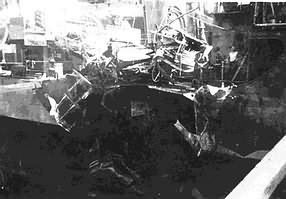 |
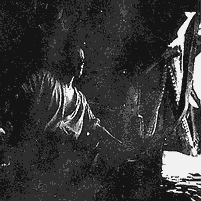 |
After
post refit trials the Firedrake left Boston for Halifax, Nova Scotia
on the 18th January 1942. She was now part of the Western Approaches convoy escort force and this would be her main duty from now until her loss. At the end of January the Firedrake left Halifax with HMS Belmont escorting convoy NA 2 for the UK. During February and March she formed part of the escort for the Middle East troop convoy WS 16. At the beginning of April she underwent repairs to her Asdic dome on the Clyde and then escorted convoys HX 181, ON 84 and HX 186 between Canada and the UK. At the beginning of May 1942 the Firedrake arrived at Londonderry to join B7 Escort Group. She underwent docking and repairs at Belfast at the end of July, and then during August formed part of the convoy ON 117. |
| On the 26th September she arrived at St Johns Newfoundland with survivors from the SS Olaf Fostenes which had been sunk eight days previously. During October and November she escorted convoys SC 103, ON 142 and ON 144; on the morning of the 5th November, in position 58° 53’ N, 26° 40’ W, the Firedrake picked up four bodies from a raft from the SS Empire Turnstone which had been sunk when on convoy ON 142 on the 22nd October, returning to Londonderry on the 3rd December. |
| Picture
right: Was taken In February 1942, the Firedrake had started work
again with B7 escort group, this photo was taken on the fo'c'sle of
the ship in Halifax. Left - Right: O'Loughlin, Fearon, Lawrence, Jorden,
Bailey and Seddan. Front row kneeling: Macarthur and Bert How. Late in December the Firedrake formed part of the escort for convoy ON 153. The convoy was attacked by U-boats on the morning of the 16th December about 550 miles of Cape Clear, the tankers Regent Lion and Bello were torpedoed and sunk. At 19.11hr the convoy was attacked again, the SS Emile francqui was sunk in position 50° 56’ N, 24° 42’ W. |
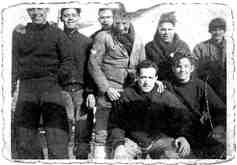 |
| At 22.10hr
that evening the Firedrake’s luck finally ran out when she was struck
by a torpedo from U-211 (Kapitanleutenant Karl Hause). The torpedo struck the starboard side, probably abreast the forward boiler room, the forward bulkhead of No. 3 boiler room remained intact, the ship listed heavily to starboard, righted momentarily then broke in two about a minute after the explosion. The bow section from which there was only one survivor, floated away and capsized to starboard, about 20 feet of the for-end remaining out of the water for about half an hour then sank. |
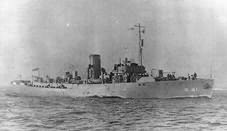 |
The
stern section remained afloat on an even keel, but the bulkhead of
the after boiler room was being pounded by heavy seas. After a quick count up, it was found that there were 35 crew members still on this section, they got to work making the depth charges safe, dumping the torpedoes and trying to attracted the attention of the other escorts, by firing star shells. |
| The
corvette HMS Sunflower came to the rescue but because of the extremely
bad weather they couldn’t get close enough to take the surviving men
off what was left of the Firedrake, their skipper decided to circle
the Firedrake hoping the weather would become better by daylight. At 00.45 on the morning of the 17th December the weather deteriorated, the bulkheads collapsed and the stern sank. HMS Sunflower, managed to rescue six officers and 20 ratings from a crew of 194. |
|
|